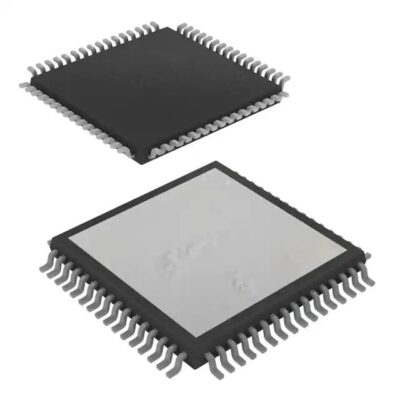TUSB9261PVP
Part Number: TUSB9261PVP
Manufacturer: Texas Instruments
Description: IC INTFACE SPECIALIZED 64HTQFP
Shipped from: Shenzhen/HK Warehouse
Stock Available: Check with us
ICRFQ.com - Electronic Components Distributor in China Since 2003

Part Number: TUSB9261PVP
Manufacturer: Texas Instruments
Description: IC INTFACE SPECIALIZED 64HTQFP
Shipped from: Shenzhen/HK Warehouse
Stock Available: Check with us
| Datasheet | |
|---|---|
| Category | Integrated Circuits (ICs) |
| Family | Interface – Specialized |
| Manufacturer | Texas Instruments |
| Series | – |
| Packaging | Tray |
| Part Status | Active |
| Applications | HDD, CD, DVD Drive |
| Interface | – |
| Voltage – Supply | 1.1V, 3.3V |
| Package / Case | 64-TQFP Exposed Pad |
| Supplier Device Package | 64-HTQFP (7×7) |
| Mounting Type | Surface Mount |
The TUSB9261PVP is a high-performance, flexible integrated circuit (IC) that connects hard disk drives (HDDs), CD drives, and DVD drives to different host systems. This guide aims to give a complete overview of the TUSB9261PVP, including its features, specifications, pinout diagram, and application factors. This guide will help you understand what the TUSB9261PVP can do and how to use it, whether you are a hardware expert, a system integrator, or just a fan.
The TUSB9261PVP is a highly integrated integrated circuit (IC) that was made to connect hard disk drives (HDDs), CD drives, and DVD drives to different computer systems. It is a 64-HTQFP (7×7) package with a number of features and functions that help data move between the drives and the server quickly and reliably.
The TUSB9261PVP works with a wide range of host systems because it handles different communication protocols, such as USB 2.0 and USB 1.1. It acts as a bridge between the storage drives and the computer. It handles the protocols, the encoding and decoding of data, and the handling of errors.
The TUSB9261PVP can be used in many situations where hard disk drives (HDDs), CD drives, and DVD drives need to be connected to host computers and talk to them. Some of the most popular uses are:
The TUSB9261PVP can be used in external hard drive enclosures. This lets users connect their HDDs to computers, laptops, or video players via a USB interface. This makes it easy to move data, back it up, and add more storage space.
The TUSB9261PVP can be used by CD and DVD drives to connect to host systems, making it simple for users to read and write CDs and DVDs. Computer systems, media players, or standalone disc duplicators can all benefit from this.
The TUSB9261PVP enables quick and dependable data transfer between HDDs and host systems and can be integrated into devices like data transfer cables or docking stations. In circumstances when vast amounts of data need to be transported quickly, this can be especially useful.
The TUSB9261PVP can be used to connect HDDs or DVD drives to media centers or entertainment systems. This makes it easy for users to get to their multimedia content, like movies, music, or pictures.
The TUSB9261PVP’s robust design and compatibility make it suitable for industrial applications that involve interfacing storage drives with embedded systems or industrial computers. This can include data logging, control systems, or industrial automation.
The TUSB9261PVP can be integrated into various consumer electronics devices, such as set-top boxes, gaming consoles, or digital video recorders (DVRs), to enable storage expansion and data transfer capabilities.
These are just a few examples of the applications and use cases for the TUSB9261PVP. Its versatility and compatibility with different host systems make it a valuable component for any system requiring HDD, CD, or DVD drive interfacing.
The TUSB9261PVP has a highly integrated design that makes it easy for the host system and attached HDDs, CD drives, or DVD drives to send and receive data. It has a USB interface block, a storage interface block, a protocol converter, and control and state registers.
The USB interface block handles USB protocols and exchanges between the host and the TUSB9261PVP. The storage interface block is in charge of the physical layer protocols and offers interfaces for connecting drives. The protocol converter transfers data between the USB and storage interfaces. The control and status registers let you set up the system and tell you about its state.
Through steps of encapsulation, conversion, and transfer, data moves from the host to the drive. During a read, data goes from the drive to the host after it has been converted and wrapped. Control and status messages make it easier for the blocks and the host system to talk to each other.
The USB interface block, the storage interface block, the protocol adapter, and the control and status registers are some of the most important functional blocks. They work together to make sure that contact is smooth, that data is transferred quickly, and that the system works well.
When designing with the TUSB9261PVP, consider the following application considerations:
By applying these techniques, you can enhance data transfer rates, handle errors effectively, and maintain proper timing and synchronization with the TUSB9261PVP.
The TUSB9261PVP is a powerful and versatile IC that simplifies the interface between HDDs, CD drives, and DVD drives with host systems. With USB 2.0 compatibility and support for various storage interfaces, it finds applications in diverse industries. When designing with the TUSB9261PVP, prioritize power supply stability, proper decoupling, and recommended components. Adhering to circuit layout guidelines, optimizing data transfer rates, and implementing error handling mechanisms enhance its performance and reliability.
Empowering system integrators, engineers, and enthusiasts, the TUSB9261PVP enables seamless data transfer and integration of storage drives with host systems. It’s a key component for creating efficient and robust solutions. For sourcing the TUSB9261PVP or exploring additional options, contact us at ICRFQ, a trusted supplier based in China. Unleash the power of the TUSB9261PVP for your storage interface needs.
WhatsApp us